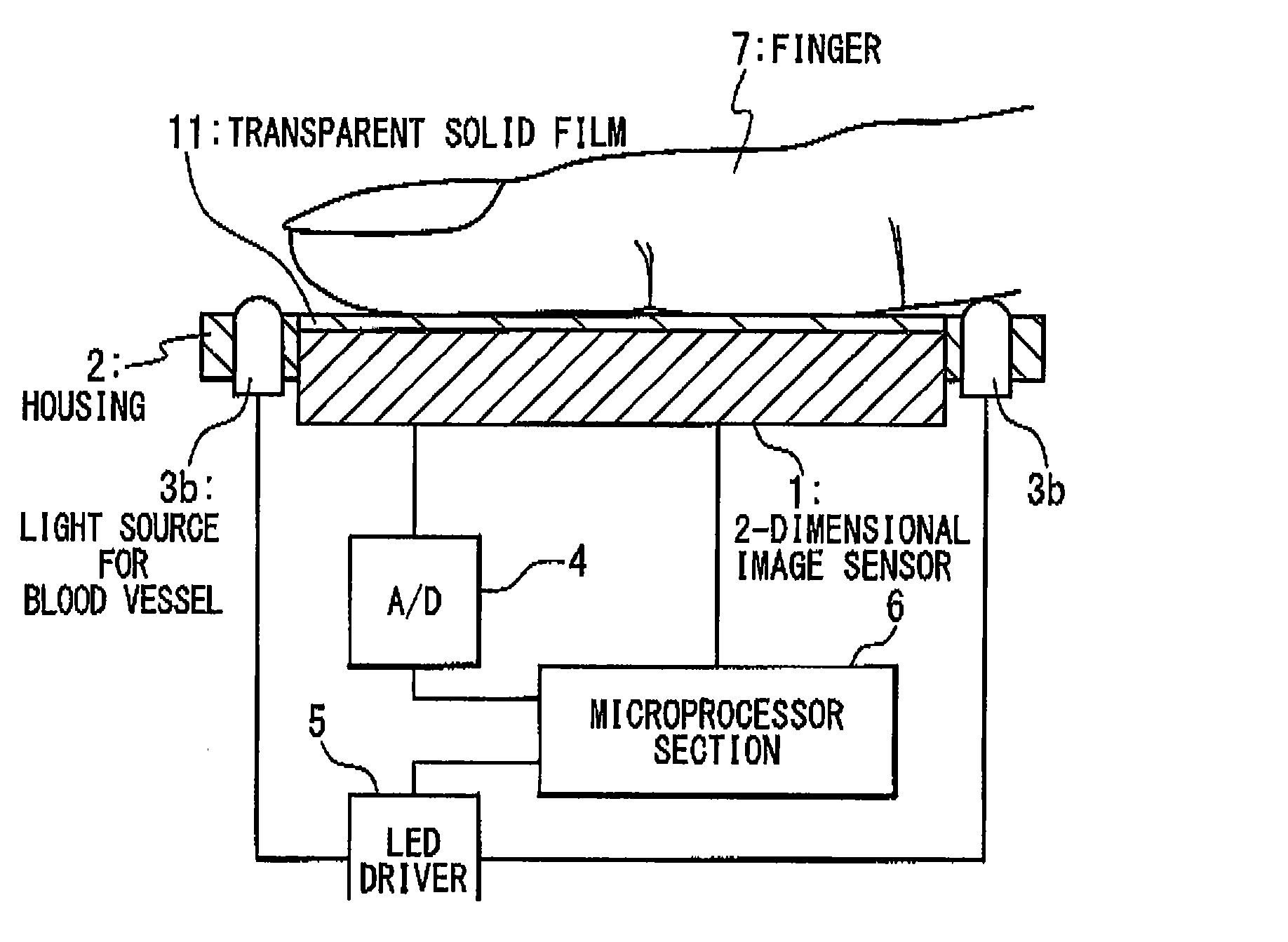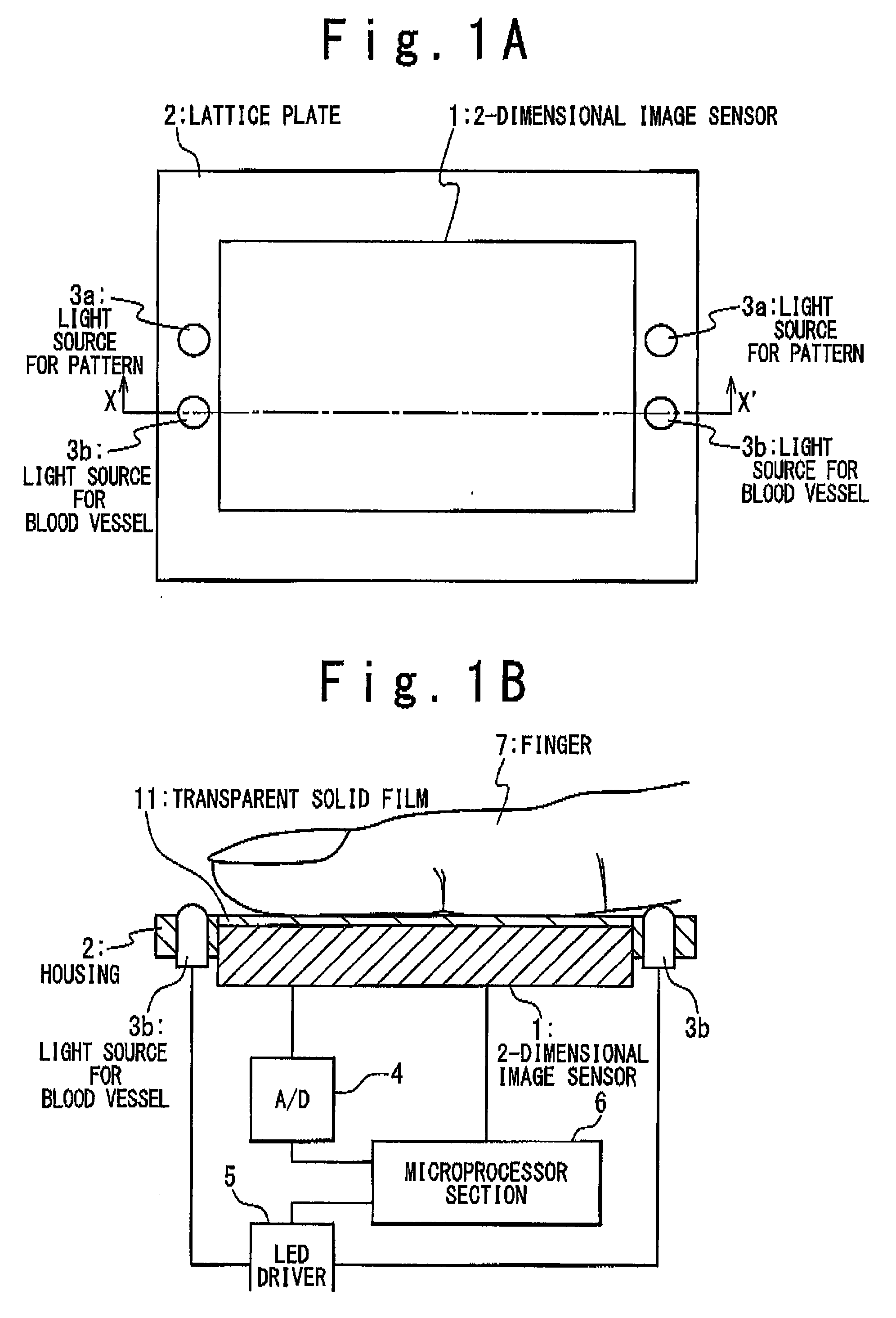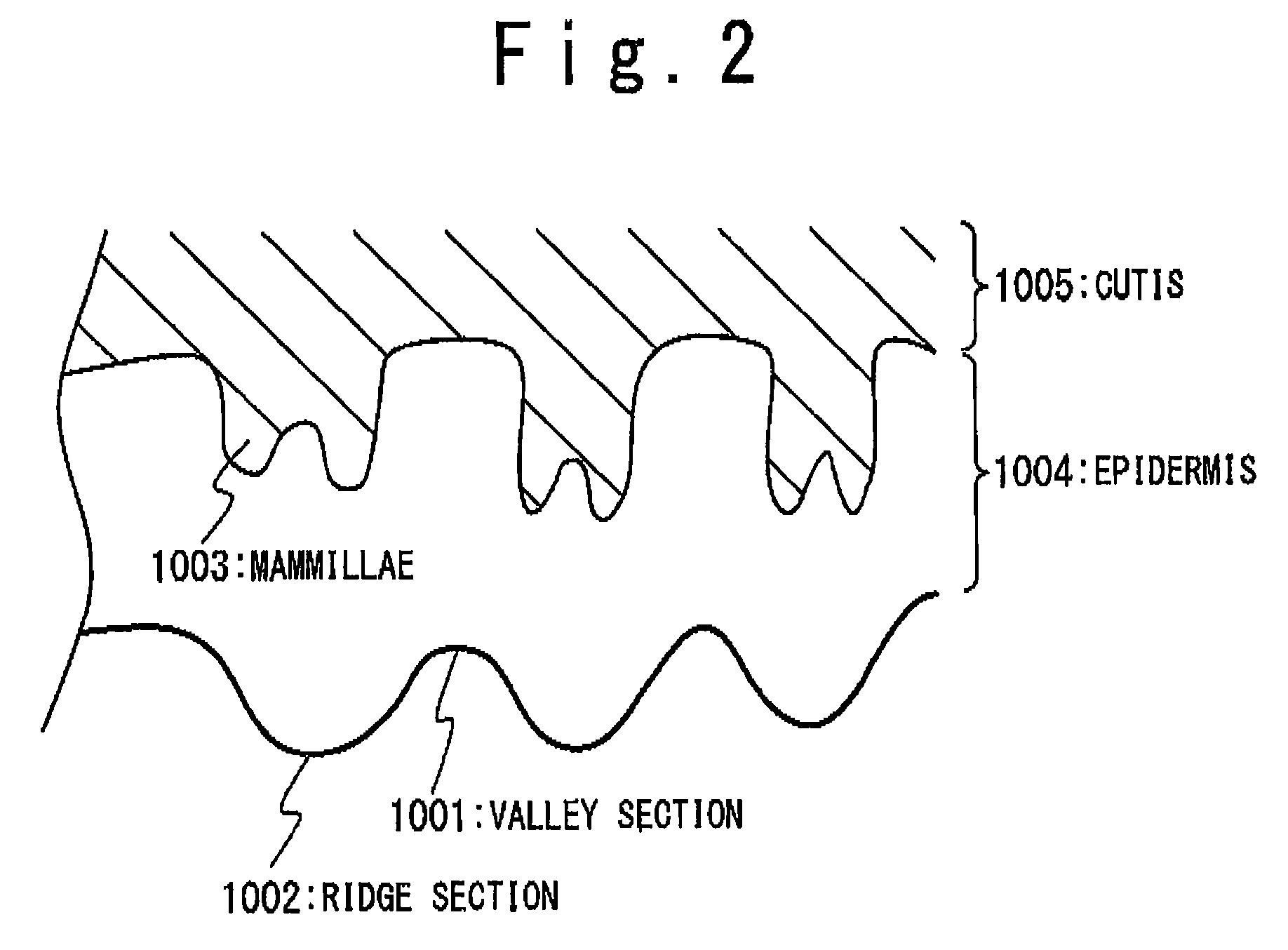Image reading apparatus for feature image of live body
a technology for live bodies and feature images, applied in the field of image reading apparatuses, can solve the problems of difficult to receive the influence of the state change on the skin surface, and difficult to obtain excellent fingerprint images under a bad condition. , to achieve the effect of preventing the loss of the thin blood vessel pattern, high precision and high precision
- Summary
- Abstract
- Description
- Claims
- Application Information
AI Technical Summary
Benefits of technology
Problems solved by technology
Method used
Image
Examples
first embodiment
[0062]FIGS. 1A and 1B are a top view and a lateral sectional view showing the image reading apparatus according to the first embodiment of the present invention. With reference to FIGS. 1A and 1B, the image reading apparatus according to this embodiment contains: a 2-dimensional image sensor 1 in which a plurality of light receiving elements (not shown) are arranged in a matrix at a pitch that is narrower than a pitch between a ridge section and a valley section in a fingerprint; a light source 3a for a pattern and a light source 3b for a blood vessel, which are provided for openings in a housing 2 of an electronic equipment to which this 2-dimensional image sensor 1 is attached; an A / D converter 4 for converting an analog output signal of the 2-dimensional image sensor 1 into a digital signal; an LED driver 5 for driving the light sources 3a and 3b; and a microprocessor 6 for performing a control of the imaging timing of the 2-dimensional image sensor 1, a control to turn on / off th...
second embodiment
[0080]With reference FIG. 7, the image reading apparatus according to the second embodiment differs from the first embodiment shown in FIG. 1 in which the light for a fingerprint pattern and a blood vessel pattern is emitted from the side of the finger 7. In the second embodiment, the light source 3a for the fingerprint pattern and the light source 3b for the blood vessel pattern are arranged at the positions opposite to the 2-dimensional image sensor 1 to put the finger 7 serving as the detection sample between the 2-dimensional image sensor 1 and the light sources 3a and 3b. The other components are same as those of the first embodiment.
[0081]As the configuration in which the light sources 3a and 3b are supported above the finger 7, the configuration may be considered in which a cavity having a size to a degree that the finger 7 can be inserted is provided in the housing, the 2-dimensional image sensor 1 is placed on the bottom of the cavity, and the light sources 3a and 3b are at...
third embodiment
[0084]With reference FIG. 8, the image reading apparatus according to the third embodiment differs from the first embodiment shown in FIG. 1 in which the light for the blood vessel pattern is emitted from the side of the finger 7. In the third embodiment, the light source 3b for the blood vessel pattern is arranged at a position opposite to the 2-dimensional image sensor 1 to put the finger 7 serving as the detection sample between the light source 3b and the 2-dimensional image sensor 1. Thus, the light for the blood vessel pattern is emitted from the rear of the finger 7. The other components are same as those of the first embodiment.
[0085]The configuration in which the light source 3b is supported above the finger 7 may be similar to that of the second embodiment. In an example of FIG. 7, the number of light emitting elements of the light source 3b for the blood vessel pattern is one. However, the plurality of light emitting elements of the light sources 3b may be provided.
[0086]...
PUM
 Login to View More
Login to View More Abstract
Description
Claims
Application Information
 Login to View More
Login to View More - R&D
- Intellectual Property
- Life Sciences
- Materials
- Tech Scout
- Unparalleled Data Quality
- Higher Quality Content
- 60% Fewer Hallucinations
Browse by: Latest US Patents, China's latest patents, Technical Efficacy Thesaurus, Application Domain, Technology Topic, Popular Technical Reports.
© 2025 PatSnap. All rights reserved.Legal|Privacy policy|Modern Slavery Act Transparency Statement|Sitemap|About US| Contact US: help@patsnap.com



